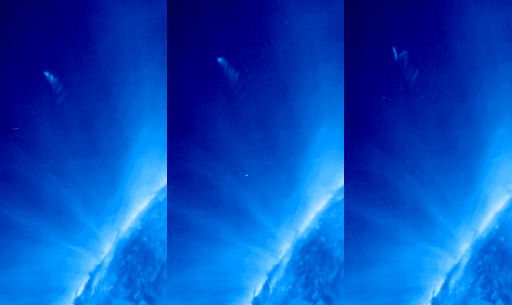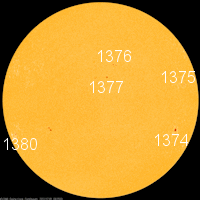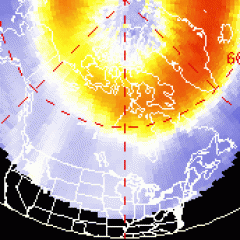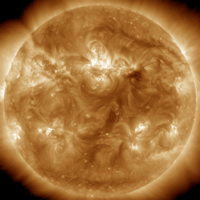~SPACE WEATHER UPDATE~12~18~11 QUIET SUN, SPIRALING COMET~
QUIET SUN: Solar activity is very low. WIth no sunspots producing strong flares, the sun's x-ray output has flatlined. Significant flares are unlikely this weekend.
SPIRAL COMET TAIL: As Comet Lovejoy recedes intact from its Dec. 16th close encounter with the sun, researchers are pondering a mystery: What made the comet's tail wiggle so wildly in transit through the sun's atmosphere? The effect is clear in this sequence of extreme UV images recorded by NASA's STEREO-B spacecraft:
"Why the wiggles?" wonders Karl Battams of the Naval Research Lab. "We're not sure. There might be some kind of helical motion going on. Perhaps we're seeing material in the tail magnetically 'clinging' to coronal loops and moving with them. [Coronal loops are huge loops of magnetism that emerge from the sun's surface and thread the sun's atmosphere.] There are other possibilities too, and we will certainly investigate those!"
Battams notes that these images can be combined with similar images from STEREO-A on the other side of the sun to produce a three dimensional picture. "When we pair these together, and throw in the SDO images too, we should be able to get an incredibly unique 3-D picture of how this comet is reacting the the intense coronal heat and magnetic loops. We are going to learn a lot."
AMATEUR ASTRONOMERS TRACK LOVEJOY: Amateur astronomers are finding themselves able to photograph Comet Lovejoy as it emerges from the glare of the sun. A team led by Czech astronomer Jan Ebr captured this image at dawn on Dec. 17th:

Credit: Jakub Cerny, Jan Ebr, Martin Jelinek, Petr Kubanek, Michael Prouza, Michal Ringes
"We used a remotely-controlled 12-inch telescope in Malargue, Argentina," says Ebr. "The sun was below horizon at the time we took the picture, but just barely. There was only a 30 minute window between the rise of the comet and that of the sun "

![]()
Solar wind
speed: 260.4 km/sec
density: 4.3 protons/cm3
explanation | more data
Updated: Today at 1626 UT
![]()
X-ray Solar Flares
6-hr max: B7 1145 UT Dec18
24-hr: C1 0205 UT Dec18
explanation | more data
Updated: Today at: 1600 UT
![]()
![]()
![]()
Daily Sun: 18 Dec 11
![]()
![]()
Sunspot complex 1376-1377 is beginning to crackle with C-flares. Even so, solar activity remains low. Credit: SDO/HMI
![]()
![]()
![]()
Sunspot number: 95
What is the sunspot number?
Updated 17 Dec 2011
Spotless Days
Current Stretch: 0 days
2011 total: 2 days (<1%)
2010 total: 51 days (14%)
2009 total: 260 days (71%)
Since 2004: 821 days
Typical Solar Min: 486 days
Updated 17 Dec 2011
The Radio Sun
10.7 cm flux: 120 sfu
explanation | more data
Updated 17 Dec 2011
![]()
![]()
![]()
Current Auroral Oval:
![]()
Switch to: Europe, USA, New Zealand, Antarctica
Credit: NOAA/POES
![]()
![]()
![]()
Planetary K-index
Now: Kp= 0 quiet
24-hr max: Kp= 1 quiet
explanation | more data
![]()
Interplanetary Mag. Field
Btotal: 1.6 nT
Bz: 0.3 nT south
explanation | more data
Updated: Today at 1627 UT
![]()
![]()
![]()
Coronal Holes: 18 Dec 11
![]()
![]()
There are no large coronal holes on the Earthside of the sun. Credit: SDO/AIA.





